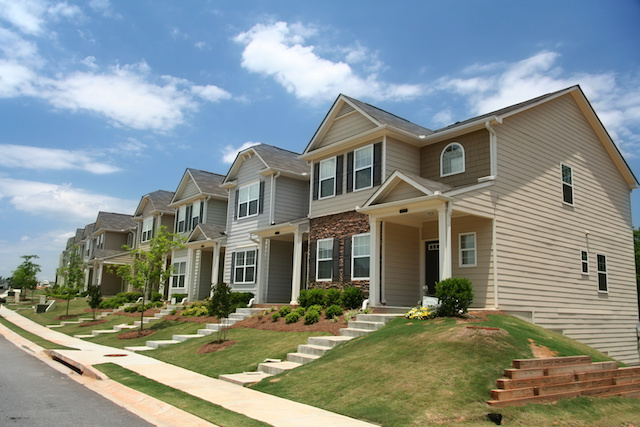Browsing Disputes Within Your Condo HOA: Tips and Tricks
Browsing Disputes Within Your Condo HOA: Tips and Tricks
Blog Article
How Condominium HOA Regulates Shared Areas and Improves Community Consistency
The governance of shared spaces within a condominium association plays a pivotal role in fostering area cohesion and maintaining residential property worths. Through the facility of extensive standards, the Condominium HOA not only manages the usage of communal amenities yet also advertises a culture of respect and liability amongst residents.
Function of the HOA
The property owners association (HOA) serves as the regulating body for condominium areas, playing an essential duty in preserving the building and promoting a cohesive living setting. It is accountable for enacting and enforcing community regulations and guidelines, which are designed to preserve the aesthetic worth and functionality of the shared area. This governance ensures that all residents stick to a standardized collection of assumptions, fostering a feeling of unity among diverse homeowners.
In Addition, the HOA manages the financial elements of the neighborhood, including budgeting, gathering fees, and preserving typical locations. This monetary oversight is critical in making sure that required upkeep and enhancements are carried out without delay, boosting residential or commercial property worths over time. The HOA also acts as a liaison in between citizens and exterior entities, such as city government and solution suppliers, resolving public worries efficiently.
Moreover, the HOA usually organizes neighborhood events and programs, urging neighborly communications and constructing partnerships amongst residents. By facilitating open interaction and resolving complaints, the HOA contributes to a harmonious living atmosphere. Therefore, its multifaceted function is necessary in making sure the smooth operation and overall fulfillment within condo areas.
Rules for Shared Rooms
Effective administration in condominium areas demands clear regulations for shared areas, which are crucial for maintaining order and promoting a sense of area among homeowners. These policies act as guidelines that make certain everybody can enjoy common areas, such as pools, gardens, and recreational facilities, without problem.
Furthermore, sanitation and upkeep requirements are important, usually stating that residents need to tidy up after themselves and report any type of damages to the home owners' association. By clearly connecting these expectations, the HOA can reduce misconceptions and motivate regard amongst locals.
Ultimately, distinct guidelines for common rooms add to the general top quality of life in a condominium area, allowing locals to exist side-by-side peacefully while taking pleasure in the amenities that boost their living experience. condo hoa.
Importance of Community Guidelines

Community guidelines play a considerable role in promoting a considerate and cohesive atmosphere within condominium associations. These guidelines establish clear other expectations for locals, promoting a sense of accountability and shared duty. By defining acceptable behaviors and practices, community standards aid protect against misunderstandings and conflicts among homeowners.
In addition, these standards function as a framework for preserving the useful and visual integrity of shared rooms. They make sure that all homeowners adhere to criteria pertaining to residential or commercial property upkeep, sound degrees, and usage of public centers. This uniformity not just improves the visual charm of the neighborhood but additionally adds to overall property worths, benefiting all house owners.

Dispute Resolution Techniques
Browsing disputes within a condominium organization needs a structured approach to make certain reasonable and effective resolution. Effective problem resolution methods commonly begin with open interaction, motivating locals to voice problems in a considerate fashion. Establishing a marked network for grievances, such as a pointer box or an on the internet forum, can promote this process.
Mediation is another essential technique, in which a neutral third event assists challenging residents get to a mutually acceptable solution. This technique fosters partnership and understanding, minimizing hostility - condo hoa. The HOA board should likewise develop clear procedures for addressing grievances, making certain all parties understand the actions involved
Normal problem resolution training for board members can enhance their ability to manage disputes efficiently. Using a distinct structure, such as the "Interest-Based Relational Strategy," helps focus conversations on passions as opposed to positions, promoting a solutions-oriented attitude.
Benefits of Community Consistency
Cultivating useful link area consistency within a condo organization brings many advantages that improve the overall living experience for residents. A harmonious neighborhood motivates partnership and participation among next-door neighbors, resulting in a more like-minded ambience. When homeowners really feel recognized and linked, they are more probable to take part in common activities and take part in decision-making processes, resulting in a stronger feeling of belonging.
Additionally, community harmony considerably decreases disputes and misconceptions, which can otherwise interfere with day-to-day live. A serene atmosphere lessens stress and anxiety and advertises mental health, enabling locals to enjoy their homes fully. In addition, harmonious relationships usually equate into enhanced home values, as possible purchasers are drawn to communities defined by stability and cooperation.

Conclusion
Through the establishment of clear policies and community guidelines, homeowners are encouraged to preserve a considerate and accountable atmosphere. Eventually, the initiatives of the HOA contribute to a cohesive neighborhood, advertising both home worths and general resident satisfaction.
Moreover, the HOA typically arranges area occasions and programs, urging neighborly communications and building connections amongst citizens. By marking appropriate actions and techniques, community guidelines assist stop misconceptions and disputes amongst citizens.
Furthermore, neighborhood standards assist in reliable interaction amongst citizens and the Homeowners Organization (HOA) With the establishment of clear guidelines and neighborhood standards, citizens are motivated to maintain a liable and considerate environment. Ultimately, the initiatives of the HOA add to a natural neighborhood, promoting both residential property worths and general resident satisfaction.
Report this page